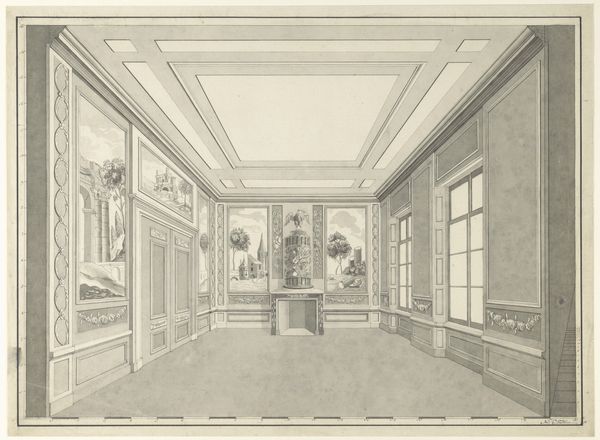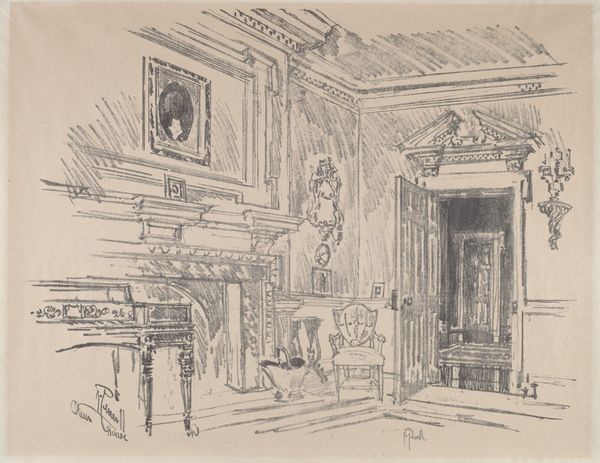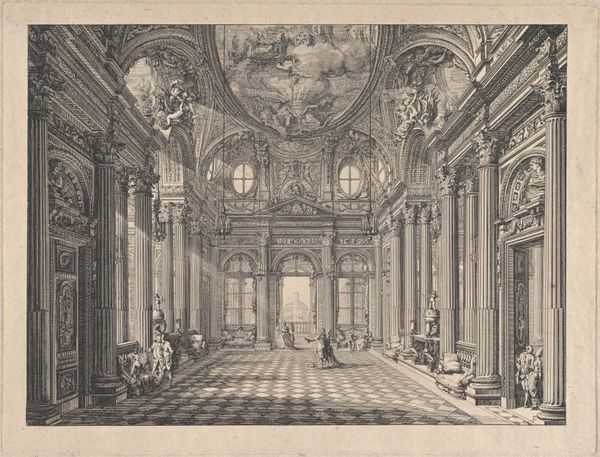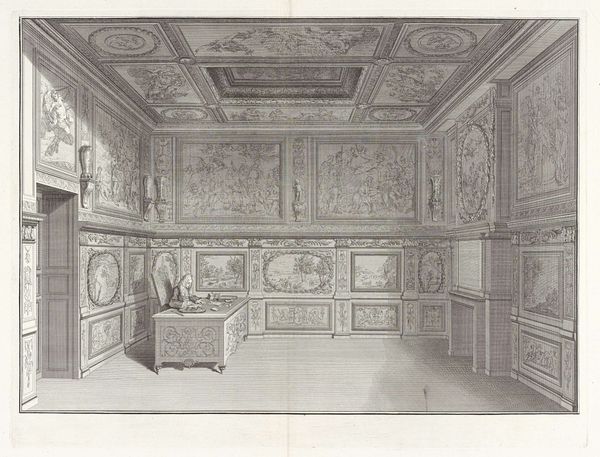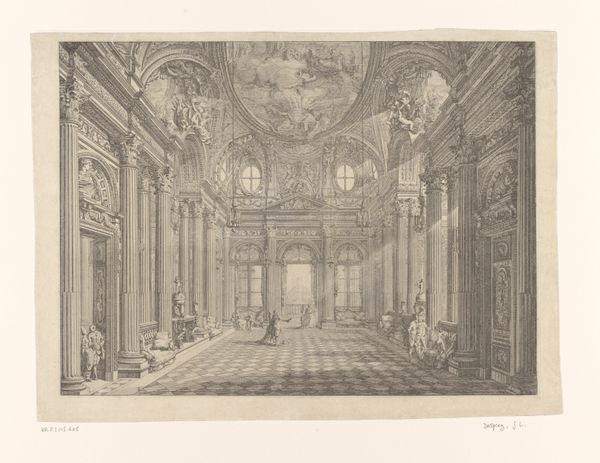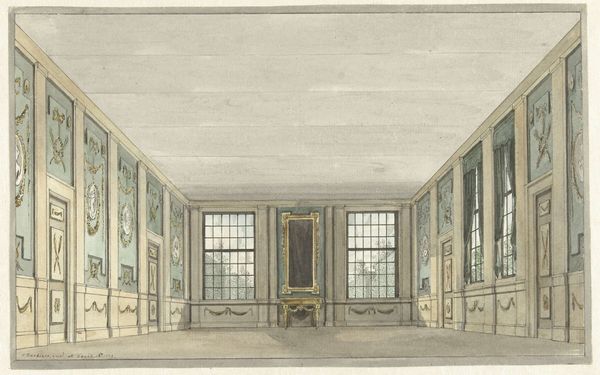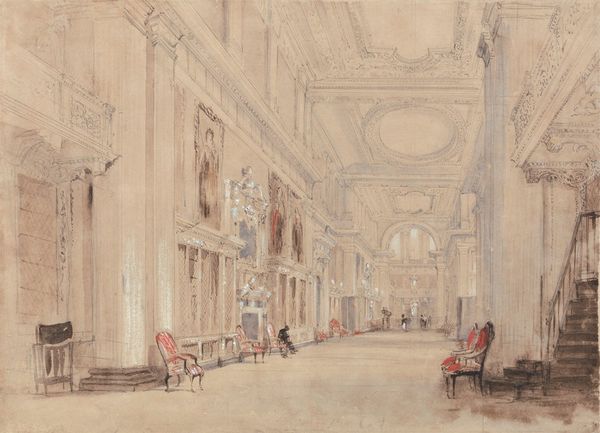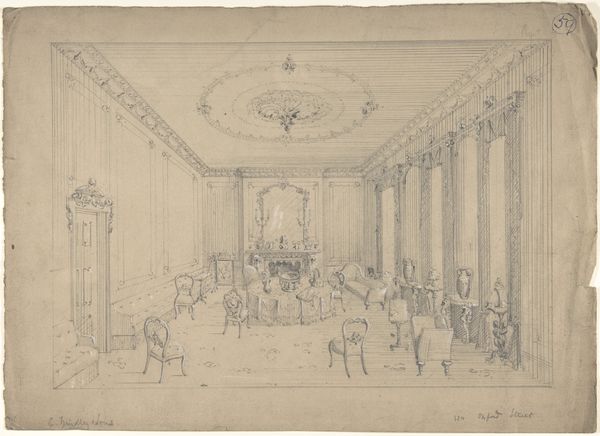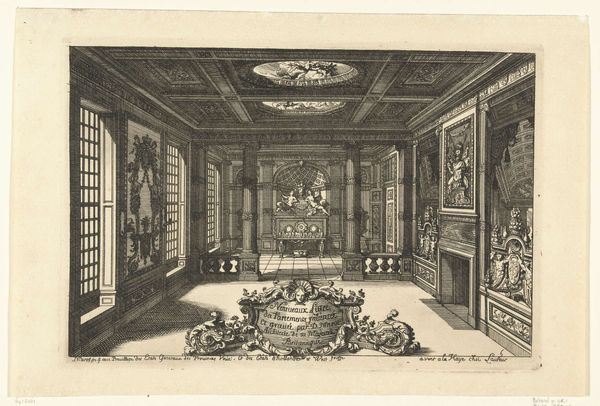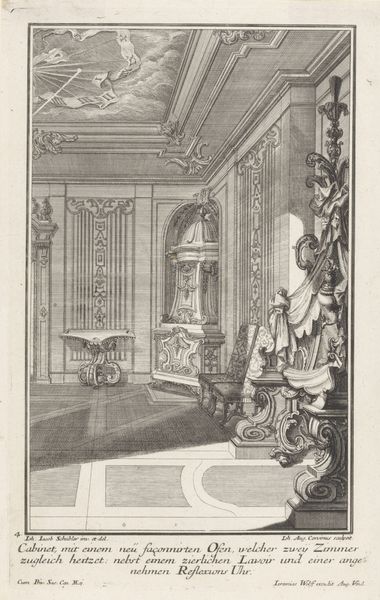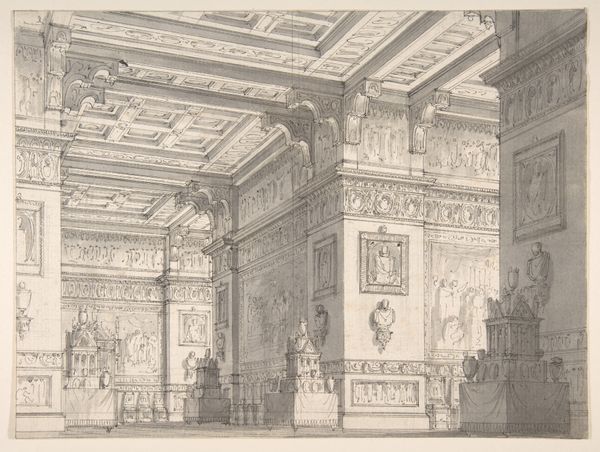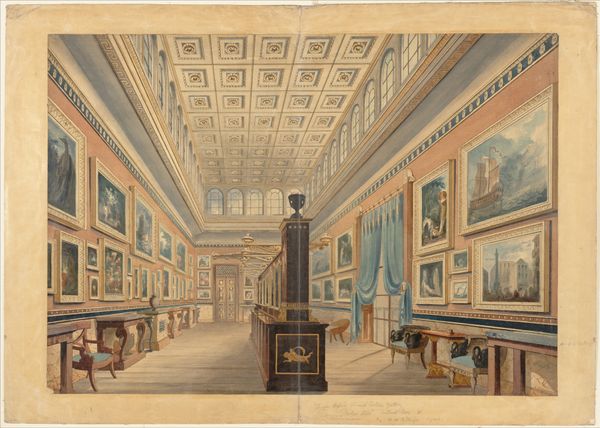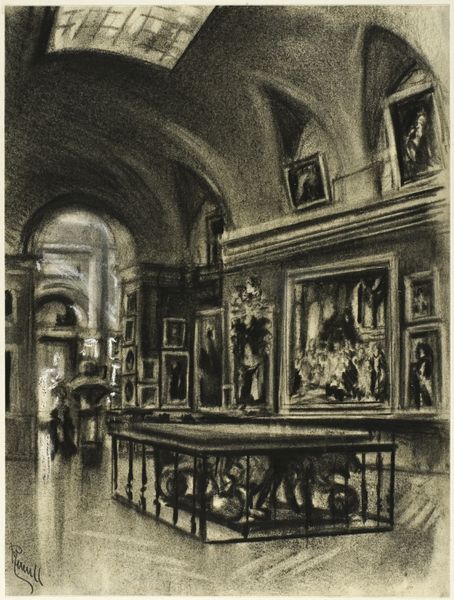
Interior of Thomas Hope's Picture Gallery, Duchess Street, London 1825 - 1854
0:00
0:00
drawing, print, sculpture, pencil, architecture
#
architectural sketch
#
drawing
#
neoclacissism
# print
#
pencil sketch
#
perspective
#
classicism
#
sculpture
#
pen-ink sketch
#
pencil
#
architecture drawing
#
academic-art
#
architecture
Dimensions: sheet: 2 5/8 x 4 in. (6.7 x 10.2 cm) (mounted on a larger sheet)
Copyright: Public Domain
William Henry Bartlett created this watercolor of Thomas Hope's Picture Gallery in London. The drawing’s sepia tones give a good sense of the period, and the way that art was both consumed and displayed. The columns, classical busts, and coffered ceiling speak to the Hope family’s wealth and taste. The architecture’s crisp precision is echoed in the artwork itself, but consider what it means for Bartlett to make such a drawing. He was part of a rising class of illustrators, whose labor reproduced luxury goods for a mass audience. Engravings like this helped circulate knowledge of high culture, even if it was beyond most people’s reach. It democratized taste, while simultaneously reinforcing social hierarchy. Ultimately, Bartlett’s drawing helps us to understand the social life of art and design, and the way that images shape our understanding of class, labor, and consumption.
Comments
No comments
Be the first to comment and join the conversation on the ultimate creative platform.
